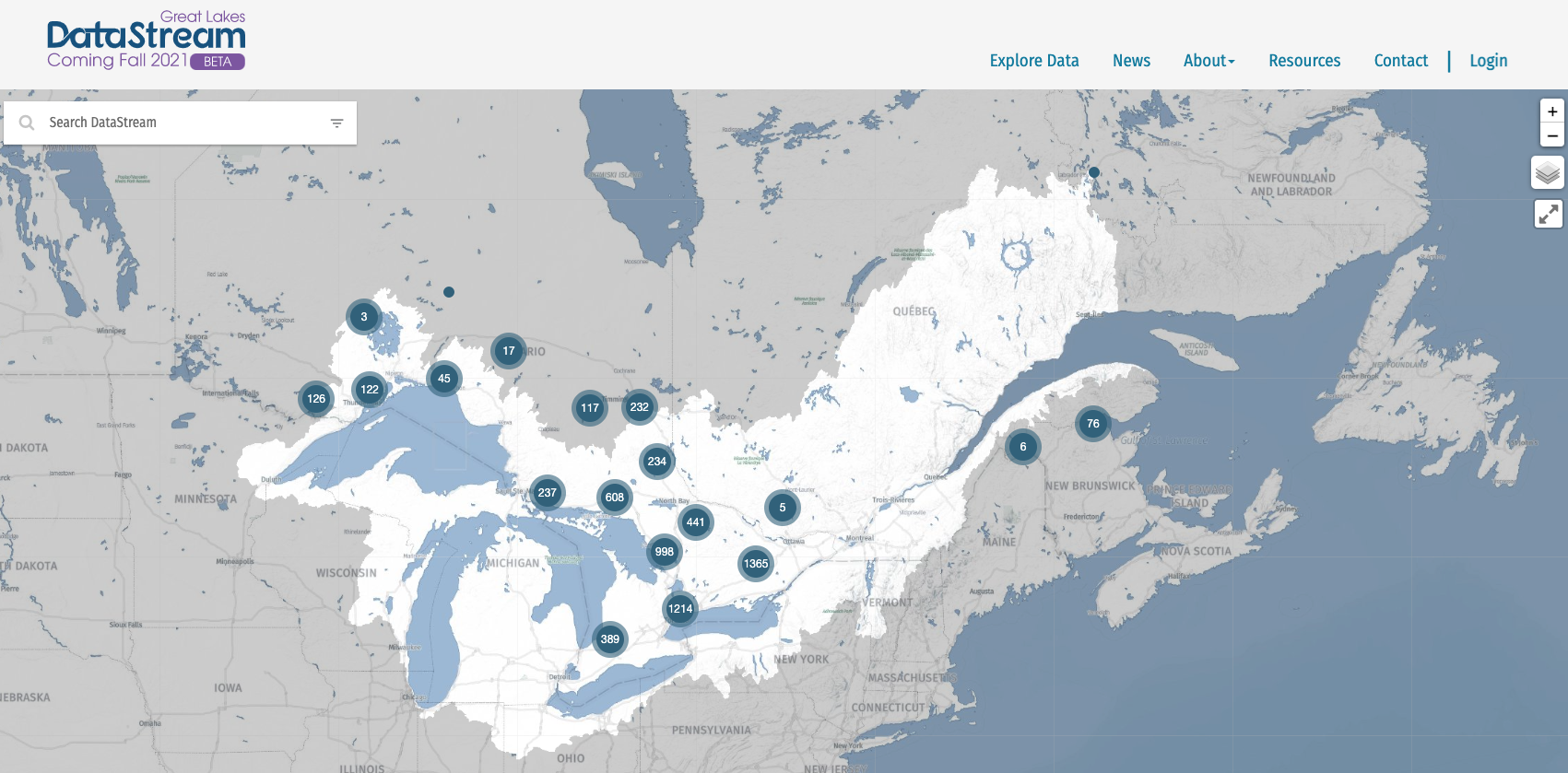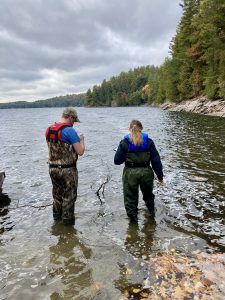By Carolyn Dubois, The Gordon Foundation
and Kat Kavanagh, Water Rangers
This is part of the Smart Project Series—stories published by Smart Great Lakes Initiative (SGLi) partners that explore current or future projects that sum up what it means to be “smart,” as established in the Common Strategy for Smart Great Lakes.
The Common Strategy is the key document of the SGLi and will be available for public comment Aug. 23-Sept. 24. Learn more and review the document.

The Great Lakes are fundamental to our lives and livelihoods, and caring for them requires good data and information. While considerable work is underway to better understand our waters, the diversity of water monitoring and research across sectors and jurisdictions in the Great Lakes presents unique challenges to managing, sharing, and using the wealth of data generated.
DataStream and Water Rangers exist to address these challenges, and the collaboration between them provides a model for how programs and technologies can connect to achieve the Data and Information goals of the Smart Great Lakes Initiative.

DataStream is an open access platform for sharing water quality data. This cloud-based technology is free to use and designed to make it easy for diverse monitoring and research groups to share, visualize, and download data. Currently operating in three regions in Canada—where 140 monitoring and research programs have contributed data from 7000+ sites—DataStream will be available in the Great Lakes region in Fall 2021.
Water Rangers equip communities with the tools they need to actively participate in water monitoring and management. Their accurate, easy-to-use test kits measure conductivity, dissolved oxygen, pH, and more, while their open access platform and app allow groups and individuals to store, share, and keep track of the data they collect. There are 37 groups in the Great Lakes region who are generating invaluable data for understanding watershed health. Among the groups that use Water Rangers’ kits and platform are conservation authorities, lake associations, advocacy groups, and governmental organizations.
In 2021, DataStream and Water Rangers joined forces to accelerate data sharing in the Great Lakes region. This collaboration means that data uploaded to Water Rangers’ platform by community groups will feed into the new Great Lakes DataStream, where it will sit alongside that of other watershed groups, scientists and government monitoring programs. The data is analysis-ready and provided in DataStream’s open data schema, modelled on the United States Environmental Protection Agency (USEPA) Water Quality Standard (WQX). Since it’s all shared openly, scientists can easily access this data to inform their research, while policy-makers can use it to inform their decision-making.
This collaboration is new but is already seeing successes in achieving the Data and Information goals of the Smart Great Lakes Initiative.
- Improving discoverability of Great Lakes data
- Fostering data compatibility
- Empowering data providers to share and access new data
Moving forward DataStream and Water Rangers will continue to collaborate to improve data flows in the Great Lakes region. This and other networking among initiatives will ensure we collectively can get the most of the energy and effort needed to generate these invaluable datasets.
